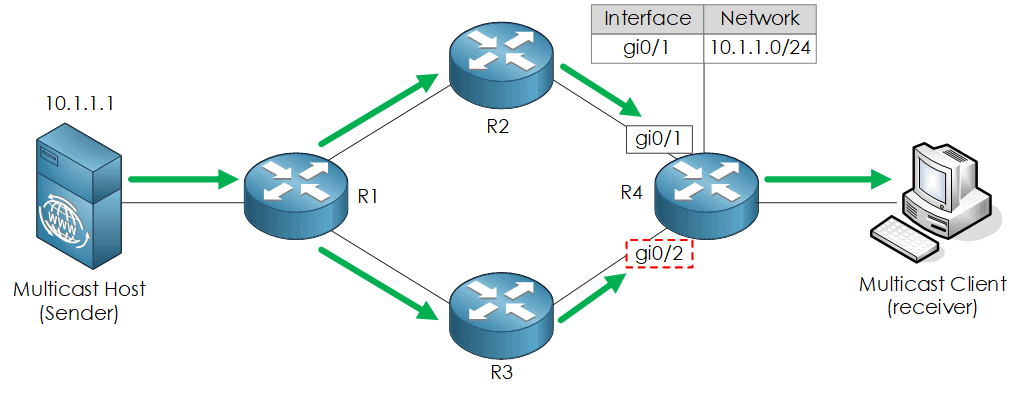Table of Contents
Introduction
Reverse path forwarding (RPF) is a technique used in modern routers for the purposes of ensuring loop-free forwarding of multicast packets in multicast routing and to help prevent IP address spoofing in unicast routing. [1]
Within this article, we will look at multicast RPF, and look into why it is needed along with how it works.
The Problem
Before we look at how multicast RPF works, we will first look at the problem.
Let us, based on Figure 1, consider the scenario:
- The multicast host sender sends the multicast stream out to the multicast client (receiver)
- R1 sends the packet out of both of its interfaces
- R2 and R3 then both send the traffic out of their interfaces to R4
- R4 then receives two copies of the multicast packet
- R4 then sends on both copies to the receiver.
How Does RPF Work?
When the router receives the multicast packet, RPF will check the routing table and check which egress interface the router would use if it were to send traffic back to the multicast sender. If the interface matches the interface the multicast packet has just been received on, the packet is accepted, otherwise, it is dropped. Below shows an example. Because R4’s routing table states that the multicast sender is located via gi0/1 traffic on gi0/2 is dropped.

Figure 1 – Multicast RPF.
Reference
[1] “Reverse path forwarding – Wikipedia.” https://en.wikipedia.org/wiki/Reverse_path_forwarding . Accessed 20 Feb. 2018.
- How to Configure a BIND Server on Ubuntu - March 15, 2018
- What is a BGP Confederation? - March 6, 2018
- Cisco – What is BGP ORF (Outbound Route Filtering)? - March 5, 2018
Want to become a networking expert?
Here is our hand-picked selection of the best courses you can find online:
Cisco CCNA 200-301 Certification Gold Bootcamp
Complete Cyber Security Course – Network Security
Internet Security Deep Dive course
Python Pro Bootcamp
and our recommended certification practice exams:
AlphaPrep Practice Tests - Free Trial
